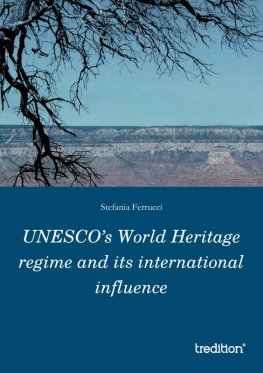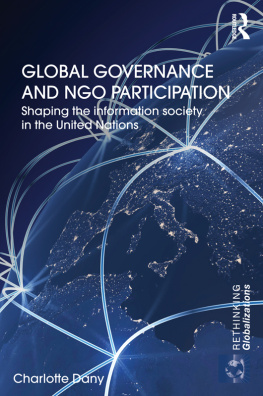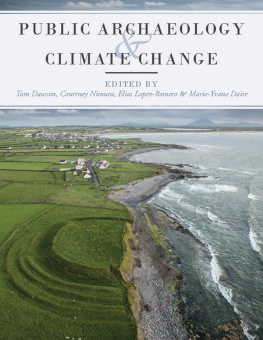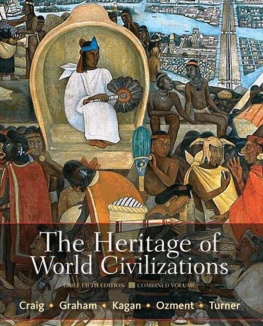Introduction
State aspirations to have national properties recognised as belonging to the heritage of humanity with an international significance have increasingly empowered the United Nations Educational, Scientific and Cultural Organization (UNESCO) in regard to its influence upon international behaviour. In the early 1970s, UNESCO embarked on an ambitious mission to protect and preserve humanitys most outstanding heritage to guarantee that it will be passed to future generations. It also aimed to recognise peoples interaction with nature and to ensure a balance between them. Towards this end, UNESCO launched a global World Heritage regime to accomplish its noble mandate. Over the past thirty-nine years this regime has become an international success as it has enabled the safeguarding of numerous tangible and intangible goods of exceptional value for the entirety of humanity. The key to its success has been a balanced combination of measures that highlight the regimes direct and indirect forms of power. Yet, with a growing number of sites inscribed on the World Heritage List and with growing threats to them, the World Heritage system has found itself increasingly facing difficulties in maintaining its moral power. These challenges have been exacerbated by a lack of coercive force and sanctioning methods in realistic terms, as well as by rising flows of tourism and, at the same time, decreasing international assistance and funds. The ongoing success of the regime thus comes to depend, more than ever, upon the shared involvement and commitment of the States Parties, the international community, and civil society.
this research will theorise on the constructivist IR approach by adapting it to the regime. How Member States follow constructed rules and adopt a logic of appropriateness will also be explored. It will also involve examination of its political tools, the World Heritage List, the List of World Heritage in Danger and socio-cultural tools, since they represent the conduit for its power mechanisms, and assess the chances of success in each arena. Examples from Cologne Cathedral in Germany and the Kathmandu Valley in Nepal illustrate how the regimes tools can be used as a deterrent mechanism to ensure the integrity of World Heritage sites. Moreover, the dichotomy of heritage viewed through the lens of national and international interests will be addressed, as well as what this entails for the States Parties sovereignty. International interests may come to the forefront of heritage protection, creating a new form of sovereignty, disaggregated sovereignty. The World Heritage regimes various benefits will also be discussed, its impact on the states economies especially in regard to tourism, the granting of international assistance as well as funds, and its influence on the States Parties social development by igniting a sense of prestige and pride about their World Heritage properties and by convincing entire nations of the necessity to jointly protect and conserve this collective treasure. Examples from Cambodia and the Democratic Republic of the Congo illustrate the effectiveness of international assistance provided by the regime, while the example of the Galapagos Islands underlines the need to develop sustainable tourism practices to prevent the deterioration of heritage sites.
After examining the World Heritage regimes ways of inducing international behaviour, this book will discuss its strengths and weaknesses and by drawing lessons from the past, it will seek to raise questions about what could be improved in the future. The existing impairments to the regime: underfunding, a lack of sanctioning power, representational imbalances, etc. provide the basis for proposing new prospects for the World Heritage regime aimed at emphasising the intrinsic values of world heritage, which should primarily serve the interests of humanity rather than economic and political advantage.
The following analysis will be drawn largely from primary sources owing to a dearth of analysis regarding the political aspect of the Wold Heritage regime in secondary sources. Furthermore, the chosen structure of this research intends to highlight the numerous intertwined aspects involved in the World Heritage regimes mechanisms. Accordingly, the tools, the incentives, and benefits have contributed, in their own way, to advance its global leverage and recognition.
1. UNESCOs World Heritage regime and its political mandate
1.1 The 1972 World Heritage Convention: Historical background and evolution
The Preamble and Article 1 of the UNESCO Constitution sets out as one of UNESCOs missions to
maintain, increase and diffuse knowledge: By assuring the conservation of books, works of art and monuments of history and science, and by recommending to the nations concerned the necessary international conventions.
conscientious international co-operation and commitment. The World Heritage Convention led to the establishment of the World Heritage Fund (WHF) in 1976, and the World Heritage Committee (WHC), which represent the main actors in the arena of the World Heritage regime.
In summary, UNESCOs World Heritage mission is to:
- persuade countries to sign up to the World Heritage Convention and to guarantee the protection of the worlds heritage;
- encourage States Parties to nominate properties in their territories for inclusion on the World Heritage List;
- influence States Parties to adopt management and reporting systems on the conservation of their sites;
- support States Parties to protect properties by providing financial, technical and educational assistance;
- provide emergency assistance for endangered sites;
- assist signatories to enhance public awareness in the protection and preservation of the worlds patrimony;
- encourage participation of the public in the safeguarding of heritage;
- foster international co-operation in the conservation of heritage.
What however is heritage? Which properties have been defined as world heritage and which internationally agreed upon criteria have been adopted to nominate them?
1.2 Cultural, natural heritage and cultural landscapes: A definition
Heritage is our legacy from the past, what we live with today, and what we pass on to future generations. Originally, the concept of world heritage was restricted to cultural properties and was then extended over time, to encompass also natural, underwater heritage and intangible properties in order to keep pace with societal changes associated with globalisation and to allow a better understanding of the chronological and societal life aspects of humanity.
The World Heritage Convention includes under cultural heritage: monuments, groups of buildings, and other man-made sites is provided by the Tongariro National Park in New Zealand, which satisfies the criteria since it has both cultural - it showcases Maori customs and ways of life - as well as natural value.
1.3 Nomination criteria and the Outstanding Universal Value (OUV)
Heritage, irrespective of whether it is natural, cultural or mixed, embodies an intrinsic internationally recognised value, the outstanding universal value (OUV). This corresponds to the main principle under the World Heritage Convention and is used to define whether a property is worth being labelled World Heritage, merits being protected and hence transmitted to our descendants. The OUV refers to the uniqueness, beauty, extraordinary qualities and importance of properties, or to historic and disappeared civilisations, or to still existing nations. It also refers to the attraction the properties exercise over people of the entire world. The Operational Guidelines for the Implementation of the World Heritage Convention describe the OUV as follows:








